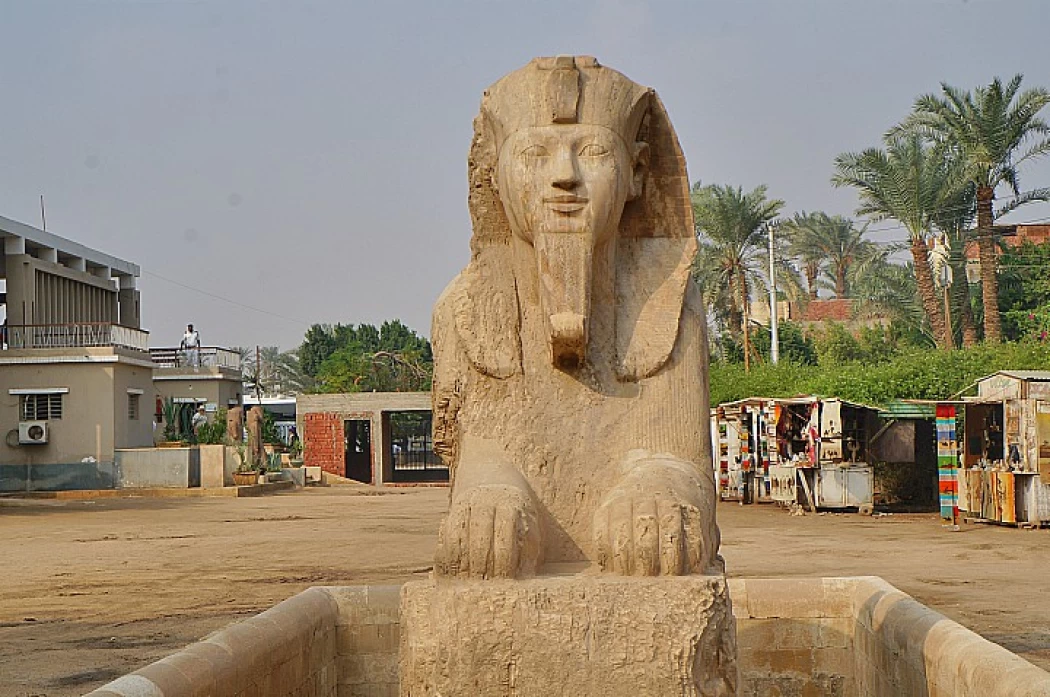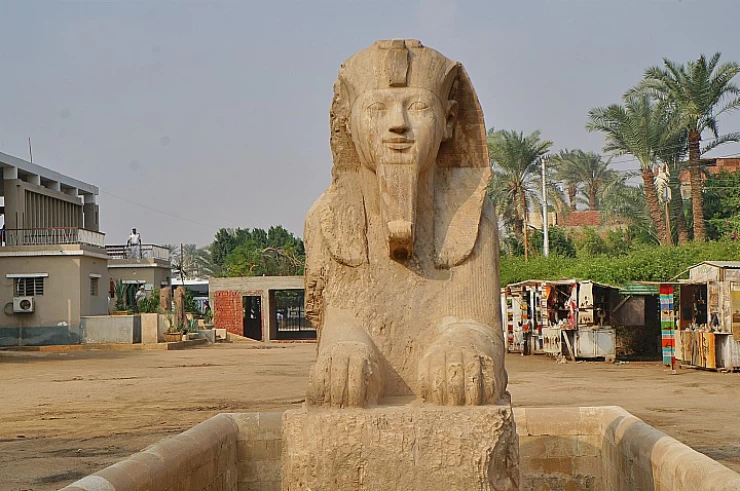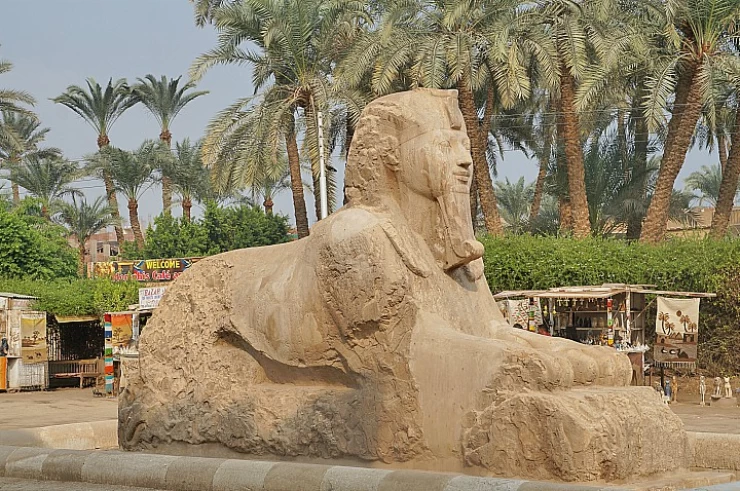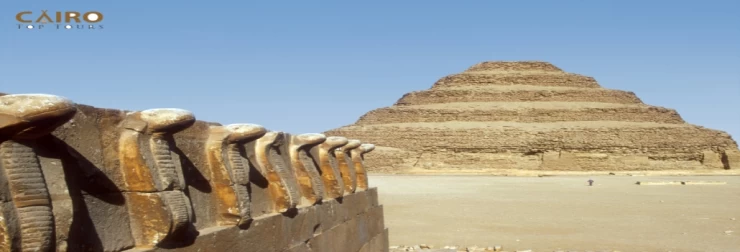
Мемфис ''Древняя столица Египта''

История города Мемфис
Мемфис - уникальное археологическое место и достопримечательности Каира. Это была древняя столица Египта, известная в древности как "Инебу-хедж", название, которое греки не могли произнести, поэтому они назвали его по имени одной из пирамид в месте расположения города, пирамида называлась Мн-Нефер, что означает красивый и стабильный. Мн-Нефер был испорчен и стал Мемфисом, тогда арабы не смогли произнести его, поэтому они назвали город Манф, и это название было окончательно произнесено современными египтянами как Мит-Рахина, что и осталось нынешним названием космополитического города. В древности это было первое название Нижнего Египта в то время, он был основан фараоном Менесом и был столицей Египта во время Старого царства, руины города находятся недалеко от города Мит-Рахина, примерно в 20 км к югу от Гизы. Он занимает стратегическое положение в устье дельты Нила, поэтому оставался важнейшим городом на протяжении всей истории Древнего Египта. Его главный порт содержал большую плотность складов, которые распределяли продовольствие и товары по всему Древнему царству. Мастерские, фабрики, и нужно помнить, что в период своего расцвета Мемфис процветал как региональный центр коммерции, религии и торговли.
На ограниченной археологической территории находился храм Птаха, Птах считается главным божеством Мемфиса, ему поклонялись как богу-создателю, а также его жене Сехмет и их сыну Нефертуму.
В современном музее Мит-Рахина выставлено несколько колоссальных статуй, самая большая из которых изображает Рамзеса II, найденная разрушенной и изуродованной, первоначально высотой более 13 метров.
Мемфис стал столицей Древнего Египта на 1000 лет в течение восьми последовательных династий и важным религиозным центром во времена Старого царства. Он достиг пика своего престижа при 6-й династии как центр поклонения Птаху, богу творения и произведений искусства. Храм Птаха, охраняемый алебастровым сфинксом, служит памятником былой мощи и престижа города. Мемфисская триада, состоящая из бога Птаха, его жены Сехмет и их сына Нефертема, была основным центром поклонения в городе.
Мемфис пришел в упадок во время 18-й династии с возвышением Фив и был восстановлен во время Нового царства, а также при персах, после чего снова был проигнорирован после основания Александрии. Во времена Римской империи Александрия продолжала оставаться самым важным египетским городом. Вторым городом Египта до основания Фустата (или Фостата) в 641 году н.э. оставался Мемфис. В последнее время он был в значительной степени заброшен и стал источником камня для окрестных поселений. Сейчас здесь сохранились впечатляющие руины, относящиеся к двенадцатому веку, но вскоре они превратились в нечто большее, чем просто простор низких развалин и разбросанного камня.
Считается, что Мемфис находится под покровительством бога Птаха, покровителя художников. Его великолепный храм Хут-ка-Птах был одним из самых главных сооружений в городе того времени, и нет сомнений, что руины бывшей столицы сегодня являются фрагментарным доказательством ее прошлого. С 1979 года они, наряду с комплексом пирамид в Гизе, охраняются как объект Всемирного наследия. Этот объект открыт для посещения в качестве музея под открытым небом.
Посещение Мемфиса
Несмотря на разрушение древней столицы, чтобы освободить место для новых поселений, в музее под открытым небом Мемфиса до сих пор хранится ряд примечательных статуй и древних руин. Огромный колосс Рамзеса II - выставленный лежа на спине, что дает вам уникальный доступ к рассмотрению его замысловатых деталей - и огромный алебастровый монолит сфинкса - вот две из главных достопримечательностей этого музея. Посетите руины древнего города Мемфиса, первой столицы Древнего Египта, в рамках одного из наших однодневных туров по Египту.
Поездка в Мемфис была бы неполной без посещения близлежащего некрополя Саккара, где находятся прекрасные храмы и первая в Египте пирамида - знаковое достижение в развитии архитектурных чудес древней цивилизации. Возьмите такси из Каира и поторгуйтесь за хорошую цену, чтобы посетить Мемфис, Саккару и Дахшур, или закажите экскурсию с англоязычным гидом, включающую трансфер: Пирамиды Гизы, Мемфис и Саккара
Египет приветствует вас своим могучим Нилом вдоль долины Нила, когда вы будете исследовать тур по восточному и западному берегу Луксора. Большинство посетителей направляются прямо к самой известной достопримечательности - Великой пирамиде Хуфу, искатели приключений, путешественники и блоггеры могут присоединиться к одному из наших бюджетных туров по Египту, проходящему через пустыню Сахара, например, туры в Сиву из Каира или, предпочтительно, туры в Белую пустыню Египта.
Сегодня музей под открытым небом, где раньше стоял Мемфис, является одним из самых посещаемых мест во время многих туров по Египту, которые мы приводим здесь:
во время пересадки в Каире мы можем взять вас на одну из наших однодневных экскурсий в Каир из аэропорта:
или в течение всего вашего визита в Египет, мы можем забрать вас, чтобы сделать полный Каир Day Tours и Египет Day Tours:
- Однодневный тур к пирамидам Гизы, Сфинксу, Мемфису, Саккаре и Дахшуру | Тур к пирамидам.
Большинство туристических пакетов в Египет будут охватывать район Мемфиса:
Планируете туры в Египет? Или из наших разнообразных туров из Каира, вы можете легко увидеть город Мемфис с Cairo Top Tours.
Туристические пакеты в Египет и однодневные туры в Египет, включая музей под открытым небом в Мемфисе и многие другие исторические достопримечательности и удивительные места:
- Пирамиды, круиз по Нилу и Шарм-эль-Шейх
- Тур к пирамидам Гизы, Египетскому музею, Старому Каиру и Хан Эль Халили
- Экскурсия к пирамидам из аэропорта Каира
- Полудневная экскурсия в Египетский музей
- Однодневный тур к пирамидам Гизы, в Мемфис и Саккару.
- Однодневный тур к пирамидам Гизы и Сфинксу, в Мемфис, Саккару и Дахшур.
- Однодневный тур в Каир с посещением Саккары, Мемфиса и Дахшура.
- Тур к пирамидам Гизы.
Если Вам интересно узнать о городе Гиза и о том, как он выглядел давным-давно, Вы можете заглянуть на сайт "Безопасно ли путешествовать в Египет? На нем вы найдете такие интересные материалы, как фотографии и факты о Гизе, которые расскажут вам о ее истории.
Located on the western banks of the Nile, southwards of Cairo stands one of the most significant historic and archaeological centers in Egypt, Memphis. This ancient metropolis existed as the capital of Egypt for approximately two thousand years from its establishment about in 3100 BC until it was overtaken by the might of Thebes and Alexandria. Given its foundation at the very earliest periods in Egyptian history and civilization, we can safely conclude that Memphis was more than just an administrative and political area but had active religious practice. Nowadays, although most of Memphis has perished over the years, the few remains still help one to piece together the colorful history of Egypt.
Let’s embark on a mission to unearth the beauty of Memphis and its history by visiting its fabulous buildings, temples, and sculptures that have endured the test of time.
The Birth of Memphis: A Historical Overview
According to popular belief, Memphis was founded by King Mena oder Narmer, who was the first ruler to unite Upper and Lower Egypt into one kingdom around 3100 B.C. Memphis, or Ineb Hedj, as the ancient Egyptians named it (translated into English as White Walls), was, on the other hand, quite favorablely located, at the delta of the Nile, where the river finally met the enormous desert. This made it a center on transport and trade activities, which connected Egypt with the Mediterranean Sea, Africa, and almost the entire world.
It did not take long before Memphis became an affluent city and the center of governance, economy, and arts in Egypt. In the course of history, it survived and thrived in the course of multiple periods of dynasties, with the Egyptian kings erecting grand and expensive palaces and temples as well as tombs. Such influence of the city lasted until the period of the Greco-Roman domination when Alexandria took over the center of power and Memphis started losing its significance over time.
Besides being the seat of power, Memphis was one of the chief religious centers in the entire ancient Egyptian world. It was here that the chief god, Ptah, was the god responsible for creation and crafts, with many temples dedicated to him and pilgrimage worshipers and qualitatively provided all over Egypt. As a passive creator, ‘one who brings into existence only by the utterance of a word’, it is easy to think why he was so significant to the hierarchy of the Egyptian gods. The most prominent temple within the city, the Temple of Ptah, dedicated to this god, attracted a great number of visitors and worshippers coming from different parts of Egypt.
In due course, more deities came to be worshiped in Memphis, such as Sekhmet, the warrior goddess of the lion’s head, who prophetically wards diseases, and Nefertem, the lotus god of regeneration. They were also known as Ptah’s family together with God Ptah, where they enhanced religious activities in the city of Memphis as religious activities became more focused.
Ruins have taken over a large section of Memphis today; however, whatever is left gives a snapshot of the city in its glorious days. Below are some of the most notable structures that have survived the test of time:
1. Temple of Ptah Statue
The Temple of Ptah is regarded as the center of all temples in Memphis and is arguably the 2nd Largest Temple in Ancient Egypt. Great losses have been incurred by the temple throughout time; however, archaeological excavations have retrieved traces of its pillars, images, and altars.
The temple complex also comprised several matrixes of courts, shrines, and chapels connected by hallways in which priests conducted rituals and offered sacrifices. Today the visitors will notice some broken colossal statues of the pharaohs that exist within the premises of the temple, showing the temple in its full splendor.
2. The colossal Statue of Ramses
One such famous monument of Memphis is the enormous limestone statue of Ramses II. Which is supposed to have been more than 30 feet high when standing with the statuette depicting the pharaoh in a striding position intricately decorated with several details of the headdress and attire worn by the king.
At the moment the statue is on display horizontally in the Memphis museum, enabling the audience to see the workmanship and proportions better. The Cairene sculptor in a low classical style statue of Ramses II holding a scepter in Memphis is indicative of one of the great kings of Egypt and also one of Egypt's greatest legacies.
3. The Alabaster Sphinx
Situated close to the gigantic image of Ramses II, the Alabaster Sphinx is a stunning artwork that weighs around 80 tons, stands roughly 13 feet in height, and extends 26 feet in length. It is assumed to have been created during the reign of Amenhotep II (18th Dynasty) and is believed to depict either him or his heir.
In contrast to the Great Sphinx of Giza, which was built out of limestone, the Alabaster Sphinx is made of one piece of alabaster, which is a sweet translucent stone. It is beautifully serene, and the features are expertly sculpted, which shows the emotions of Egyptian art vividly.
4. The Burial Tomb of Horemheb
General Horemheb, who would later assume the title of king, is interred in a sarcophagus that has been placed inside the Saqqara complex; however, he had stronger associations with Memphis. While Tutankhamun sat on the throne, he served in a prominent position as commander within the city and therefore knew its corridors too well. His is a handsome tomb covered with reliefs of his victories and greatness in arms.
This tomb provides much pertinent information on the 18th Dynasty as well as the political climate of Memphis during the reign of Horemheb in terms of arts and culture.
Recent Discoveries: Unearthing Memphis’ Hidden Treasures
Memphis remains a hotbed of archaeological activity today, with recent findings opening new windows into the previously obscure city. The remains of ancient statues, sarcophagi, and other pieces of art have been excavated from several periods of history in Memphis, which contributes to understanding this corner of the world.
In the hot seasons of recent years, archeologists dug up a high number of Sekhmet’s statues, which means that she and her worshippers’ devotion was cosmically present in Memphis. Moreover, ascertaining factors about their lives has also been demonstrated by the discovery of sepulchers of priests and other city officials, as well as that of artisans who were responsible for serving the city’s temples.
Memphis’ Legacy: The Rise and Fall of an Ancient Capital
Memphis was more than a political seat but a cultural and intellectual powerhouse. The city attracted many artists, scribes, and scholars, all of whom played a part in the artistic and literary development of Egypt. However, this was true until other regions grew into power; the seat of governance was moved to Thebes and later Alexandria, leading to the stagnation of Memphis.
Economic decline in the city occurred at a slow pace, but it was already noticeable during the Roman occupation. With the rise of Alexandria as the major educational and commercial hub, the temples and monuments of Memphis were neglected, and the city itself was eventually buried beneath the shifting sands of the Nile Delta.
Visiting Memphis Today: A Step Back in Time
Even though the majority of ancient Memphis has been reduced to ruins, the location is a significant place for people who are interested in the history of Egypt. The open museum that is found in Mit Rahina depicts the resplendent past of the city, with sculptures, sphinxes, and pieces of temples set in a calm environment.
Guided Tours: A guided tour is advisable since a narrative accompanying the monuments adds value to the monuments. A well-informed guide is capable of animating the ruins, making the visit worthwhile.
Combine with Saqqara: Expect Memphis to include a Saqqara tour as the Saater cemetery is just a few kilometers away. This is the best way to understand the evolution of funerary architecture and practices in general in ancient Egypt.
Photography: The place is also very good for photography, particularly for the giant statues and the Alabaster Sphinx. The old statues can be more delightful in the morning or evening when the light is not harsh.


















